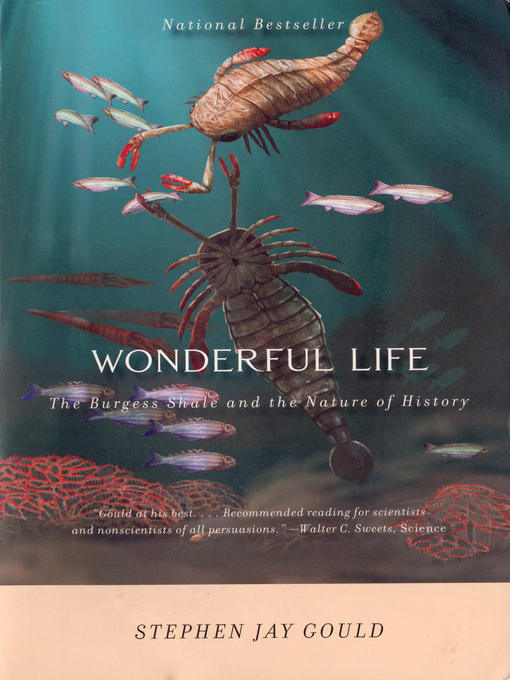"[An] extraordinary book. . . . Mr. Gould is an exceptional combination of scientist and science writer. . . . He is thus exceptionally well placed to tell these stories, and he tells them with fervor and intelligence."—James Gleick, New York Times Book Review
High in the Canadian Rockies is a small limestone quarry formed 530 million years ago called the Burgess Shale. It hold the remains of an ancient sea where dozens of strange creatures lived—a forgotten corner of evolution preserved in awesome detail. In this book Stephen Jay Gould explores what the Burgess Shale tells us about evolution and the nature of history.- Handmade and Homegrown
- New eBook additions
- Dungeons & Dragons
- Black History and Black Future
- Canada Reads 2025
- Celebrating #LMM150
- Witch, Please
- True North Strong and Well-Read
- Summer Reading List: Recent Canadian books to read this summer
- Hamilton Reads 2024: Pride Month
- Looks Sweet but Could Be Spicy
- Based on a True Story: Page to Screen Edition
- Always Available Fiction
- See all ebooks collections
- Canada Reads 2025
- True Crime: For When You Run Out of Podcasts
- Available now
- Lest We Forget
- Summer Reading List: Recent Canadian books to read this summer
- New audiobook additions
- Looks Sweet but Could Be Spicy
- Most popular
- Hamilton Reads 2024: Chrysalis
- Indigenous History and Voices
- Based on a True Story: Page to Screen Edition
- Entering Our Eclipse Era
- BookTok Made Us Do It
- See all audiobooks collections
- Cooking & Food
- Home & Garden
- Lifestyle
- Fashion
- Health
- Business and Economics
- See all magazines collections


